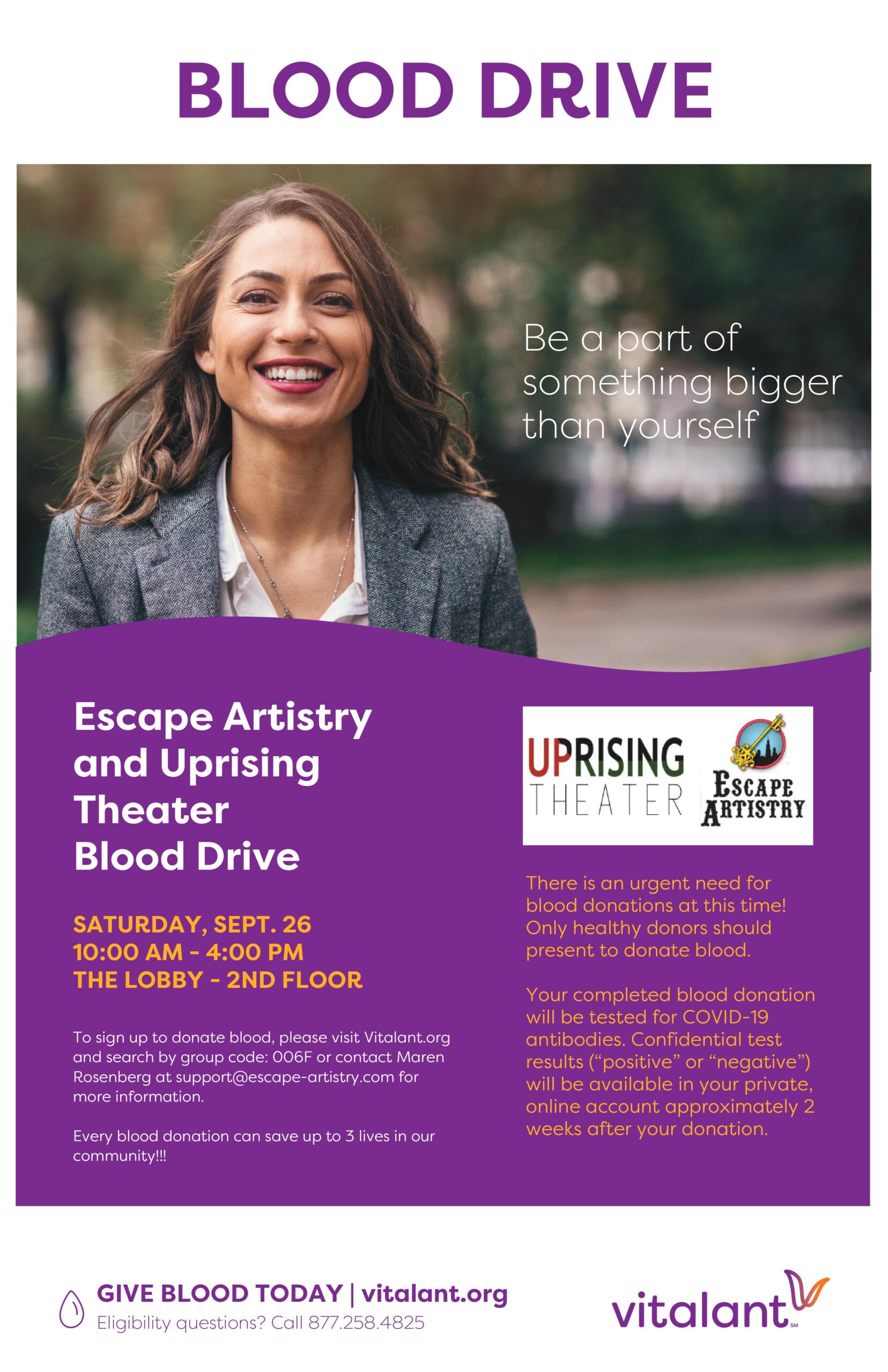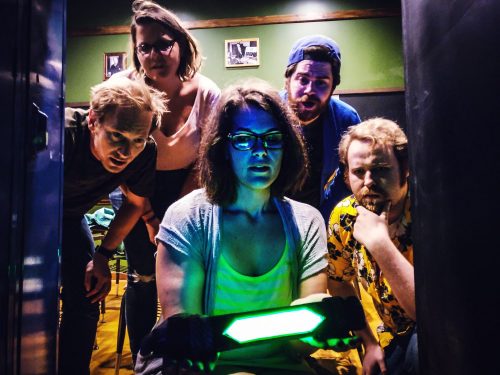Problematic Escape Room Themes (And How To Avoid Them)
ORIGINALLY FEATURED ON ESCAPE FRONT, PROBLEMATIC ESCAPE ROOM THEMES
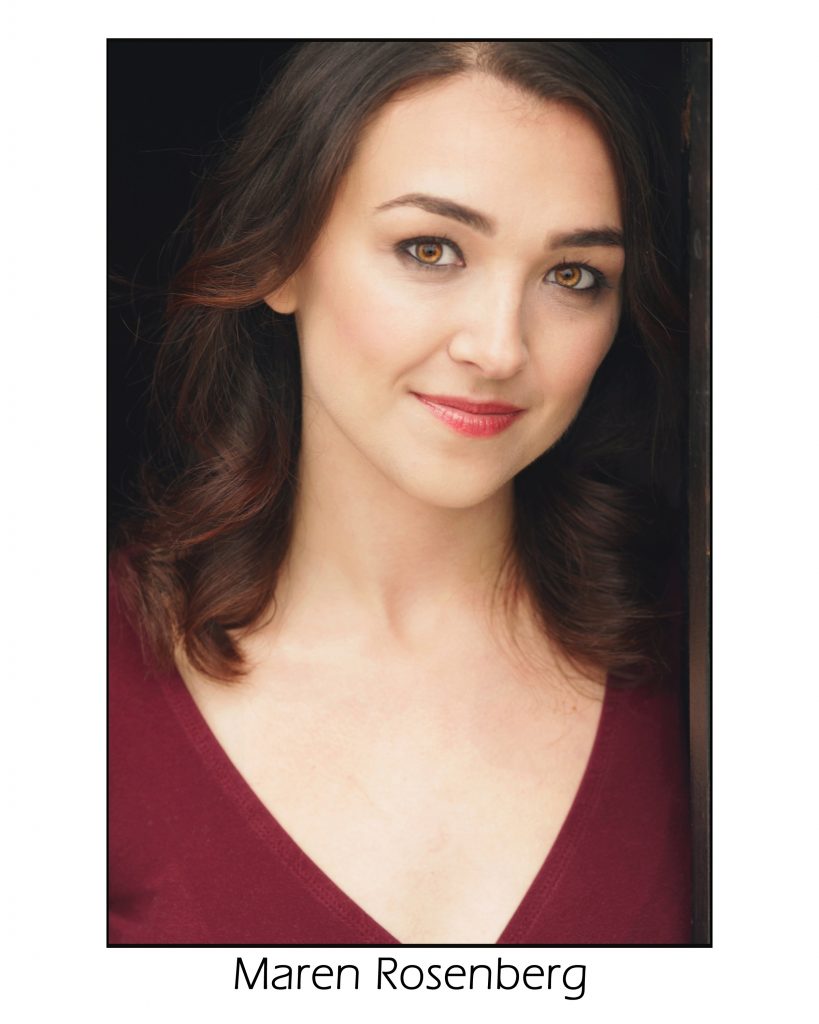
Written by Maren Rosenberg, owner, manager, and Master of Mayhem at Escape Artistry.
I believe that, when it comes to art, no topics are off-limits. I’m not suggesting that anyone censor themselves or stay away from difficult topics in the work they produce, be that a video game, painting, film, or escape room. However, it is important that difficult topics and controversial themes are addressed and presented with sensitivity and societal empathy. In this piece, I’d like to talk about escape rooms as works of interactive art, developing game themes that are exciting to play and speak to the community, and avoiding distasteful themes.
Escape room owners have come into the industry from all kinds of professional backgrounds. I personally know owners with previous careers in software engineering, film production, medical sciences, education, sales, HVAC, PhDs in History, and game design…just to name a few. My background is in theatre – I’ve been an actor, director, writer, and teaching artist both in this country and internationally. It’s probably no surprise then that I think of escape rooms as an artistic medium; a hybrid of interactive theatre, environmental storytelling, live gaming, and multimedia art. As an artist, I’m used to thinking about the reason things are being presented and their impact on the audience. Why are we telling this story? What does it say about us that this is the story we’re telling? How does it affect the people who engage with it?
Escape rooms, like any kind of art, see their impact vary widely based on the people who are participating in them. Tourists, school children on field trips, corporate groups in for team building, game enthusiasts, and private groups of friends and family. It’s critical that we think beyond what we personally find upsetting and think about the communities we serve. If you don’t, and you aren’t prepared to discuss the themes you’re asking guests to engage with, there’s a real danger. You could be normalizing or trivializing issues that affect the community you’re in, as well as being seen to profit off it.
Without even thinking about it, you know that doing a 9/11-themed escape room or a Plantation Escape would be troubling. You know that even if you wanted to make a game that helps people think about the Holocaust, you wouldn’t open “Escape from Auschwitz.” Though these are obvious examples of themes that make light entertainment of traumatic topics and social issues, most of them are more insidious.

If you are are an owner franchising from a European-based company, you will most likely have the option to install a prison-themed room – one of the simplest and most popular escape room themes. However, the United States’ prison system is fundamentally different from and astronomically larger than any other country of similar development. The United States locks up more people, per capita than any other nation. Close to 2,500,000 million are currently incarcerated. There are no individual American states with a smaller number of people incarceration rates than any of the founding NATO countries (source). This history of mass incarceration will fundamentally change the way people think about a Prison escape, particularly if your business operates in an area with communities who are traditionally more affected by this epidemic. (I suggest reading ‘The New Jim Crow: Mass Incarceration in the Age of Colorblindness’ by Michelle Alexander if you want to take a deep dive into this specific topic).

Likewise, an American company can easily get away with a Nuclear Fallout escape room scenario…but if you were to open the same room in a country with a history of nuclear disasters like Russia or Japan, you may find yourself with uncomfortable customers.
You should also think about whether the characters in your rooms and scenarios are promoting stereotypes. Welcome to our CIA themed room, you must stop a terrorist plot….and the terrorists are Arab. Welcome to our spy-themed room, you must uncover the identity of the spy….and the spy is Russian. Welcome to our special forces themed room, you must stop the smugglers….and the drug smugglers are Spanish speakers. You get my point. Beyond these stereotypes being offensive, they’re tired. It’s lazy storytelling. I find that these storylines take away the enjoyment of an escape room — instead of something exciting and fresh, it’s boring. I, and many other guests will walk in, roll my eyes, sigh deeply, then begin the escape. As a participant, before I even look at your first puzzle I’m already annoyed and feel out of place. I’m starting at a negative rather than neutral. You only have one chance to make a first impression. Think about the attitudes that you’re presenting and whether they’re the types of attitudes you’d like to see in your community. Push yourself beyond ‘easy’ escape tropes. YOU MAY ALSO LIKE: Planning an Escape Room: Concept & Design
Whether you think of yourself as a storyteller or not, every escape room has some narrative background to justify where you are, who you are, and what you’re doing. This is a powerful tool: you’re asking people to suspend their disbelief and use their imagination, so you aren’t bound to reality. In many states you can’t even legally lock the door, so people want a compelling reason to wait until the end of the game to open it. Guests care more that the story is engaging and clear than if it’s true to life.
The key here is specificity. As in much of life, your work, story, and theme will be stronger if you’re intentional. Specificity can give you inspiration when creating a design and will set you apart from the competition. Allow yourself lots of time to brainstorm and daydream when coming up with new rooms.
When I say be specific, I don’t mean that you should plagiarize media that people already know. Be imaginative. Imagine how frustrating it would be if you took the time and energy to come up with a unique idea and someone else copied and profited from it. People are just as likely to play the Aquarium, Deep Sea Adventure room as they are The Little Mermaid Room or Finding Nemo room. If you would like to have a story as inspiration use one that is in the public domain (published over 100 years ago) – Alice in Wonderland, the works of Shakespeare, Frankenstein are all well-known stories that are in the public domain.
Two Tips
Thinking about specificity, here are two easy ways to make sure your escape room themes are engaging and tasteful:
1. Research
Do research about the theme as part of your design process. If you want to do a prison-themed escape room that better educates about the issues of solitary confinement or mass incarceration, I will be the first to support you. This doesn’t have to be heavy-handed, but an opening narrative that cites how long you’ll be thrown in solitary confinement if you fail or acknowledges how difficult and tricky it can be to prove your innocence is going to be more interesting than “There are two pieces of a letter to the warden that prove your innocence.” Don’t let your work either become too general or “misery tourism.”
This is true for any escape room dealing with a modern-day tragedy (meaning that people impacted by it are still alive).
2. Fictionalize/Historicize
Fictionalize or historicize your theme and let the audience make their own connection. If you want to make a prison escape, set it in 1776 and tell your guests they’re American revolutionaries trying to escape from a fort full of British soldiers. Not have you made the stakes, context, and heroics more clear by tying it to a well-known event, you aren’t capitalizing on the struggle of a group that is still struggling.
I’d suggest looking at the film below from Lisa and David from Room Escape Artists (not my company, just a similar name). They too did an excellent lecture on problematic escape room themes. They discuss Holocaust-themed rooms, escape Malaysian airline flight before it crashes, etc.
Practical Examples From Escape Artistry
Let’s take Escape Artistry, my company, as a practical example. All of our rooms are loosely tied together by a time travel narrative where we send guests to Chicago’s past, present, and future. Here are some examples of how we started with traditional escape room themes and used them to develop games that are specific and unique:
Pulling From History: Roaring Dan’s Pirate Dungeon
Like many other companies, we have a Pirate-themed room. But rather than giving it a generally piratical name, it is set in 1908 and titled Roaring Dan’s Pirate Dungeon. Roaring Dan was a real person who attacked ships on Lake Michigan in the 1900s, so by using his life as a baseline, we didn’t have to come up with an imaginary story. As it is based in reality, it carries with it an understanding of the time and place and a lot of details that we used both when creating our backstory and when building our room. While Roaring Dan, like other pirates, was doing terrible things, the historical context gives us an opportunity to both have fun and acknowledge that what he did was wrong. Unlike, say, a Somali Pirate themed room, nobody who Roaring Dan terrorized is still alive, nor is the city of Chicago directly feeling the negative effects of his actions. YOU MAY ALSO LIKE: Planning an Escape Room: Beta Testing
Pulling From Fictional Tropes: The Dollhouse
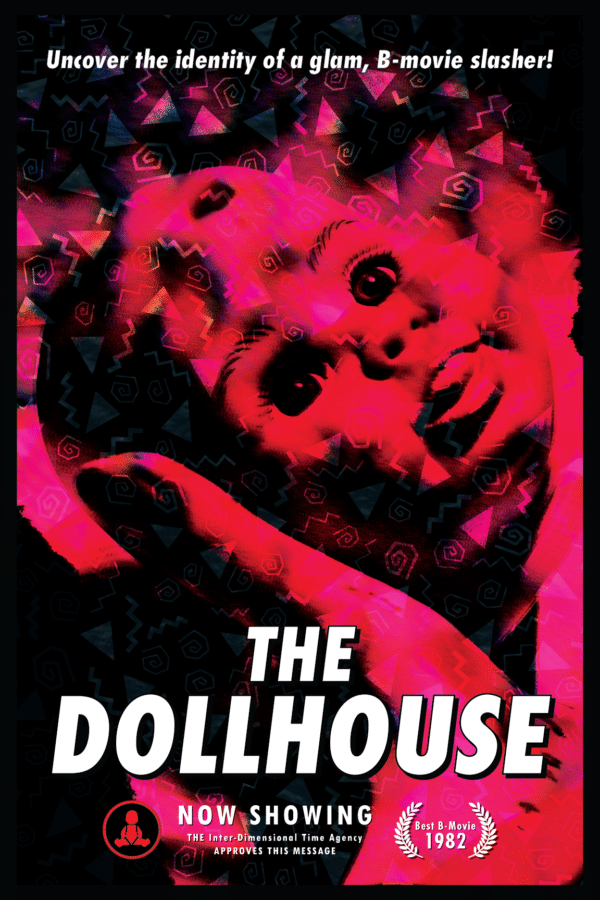
If you don’t want to pull from history, you can also easily develop stories by leaning into a fictional style. When developing our serial killer room, we chose not to capitalize on one of Illinois’ real serial killers who hurt people and caused suffering like H. H. Holmes or John Wayne Gacy, Jr. We chose instead to set The Dollhouse in 1982 and build it in the style of the 1980’s B-Horror movies. In the over-the-top style of those films, we modeled our serial killer as a creepy chimera of David Bowie, Buffalo Bill, Divine, and Dexter, gave them an obsession with creepy dolls, and decked out the room with posters of 80’s movies, a VHS of Sweatin’ to the Oldies, a soundtrack full of glittery hits, and a cartoonish level of blood. (Side notes, it’s also scary that groups of youth don’t know how to use a cassette tape player)
Do The Unexpected: Duck & Cover Classroom
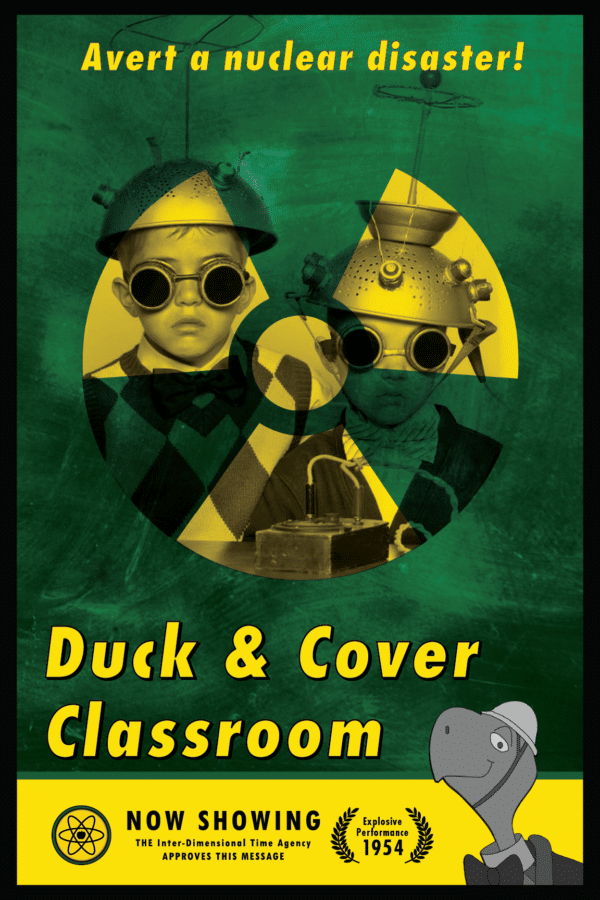
When building our nuclear room, we knew we didn’t want to trivialize the massive casualties that come along with nuclear warfare. Instead, we set Duck & Cover Classroom at a school (the Lab School) close to the University of Chicago, where the Manhattan Project built a reactor. The plot doesn’t focus on stopping or finding an atomic bomb, but rather on tracking down a piece of radioactive material that went missing from one of their experiments. While the room still carries the kitsch of Atomic Era music, design, and culture, focusing on the science of these experiences is unexpected, educational, and unique.
Look To The Future: The Railcar
If you prefer not to be bound by history, set your game in the future. Our flagship room, The Railcar, is set in 2055 after Chicago has suffered a second cataclysmic fire. Set on a CTA train covered in advertisements for an evil hegemonic corporation, The Railcar brings up issues of censorship, corporate control over public life, and the self-righteousness of domestic terrorism. By setting the game in the future and saying that the train has been “hacked” and “tampered with” rather than “hijacked,” and having the offending character be a white, V for Vendetta-quoting hacker rather than a Middle Easterner, we avoid some of the offensive stereotypes, triggering language, and negative attitudes that would otherwise accompany the scenario. Frankly, many guests play the game without ever thinking about corporate control, censorship, or domestic terrorism. And that’s great. Either way, it provides guests with a clear understanding of where they are, what’s happening, and the feeling that there is a larger world in which The Railcar occurs.
Other Practical Examples
I can find examples in other companies as well. AI Escape in London has a room that directly explores the difficult topic of mental health in an elegant and ethical way. The room itself who based on a short film about mental illness. The room/s were very unique and there’s still very much was a sense of urgency. As you solve puzzles and it became more and more clear what this mental institution setting really was… (no spoilers). The staff was prepared to discuss the themes of the room after, one of the owners even ran a marathon (wearing a giant cardboard lock no less) to raise funds for a mental health nonprofit. This is an example of something that could have been problematic. ‘Escape the Asylum’ but through solid storytelling, detail, and specificity created an immersive and engaging world that really left an impression.
Conclusion
I think anyone reading this article can agree that it wouldn’t be in good taste, or culturally appropriate to do an escape the pedophile priest room. No one is going to be making a generic escape from the Japanese internment camp and not expect to address the cultural commentary and negative press. However, if you really think about it, is the Voodoo Room, Jailbreak, an Escape the Ebola Outbreak room really less offensive? My aim in writing this blog post is not to call people out or set myself up as the monitor of morality, rather my goal is to encourage people to be creative and innovative, which will only strengthen the industry as a whole.
Escape Artistry
The Time Gallery: 1342 N Milwaukee Ave, Chicago
The Railcar: Flatiron Arts Building, 1579 N. Milwaukee Ave. Ste 350, Chicago
773-789-9535
Choose Your Mission!
At Escape Artistry, our escape rooms are "Chicago Original." All 6 of our games are handcrafted by local Chicago artists with custom puzzle games you won't find anywhere else!

